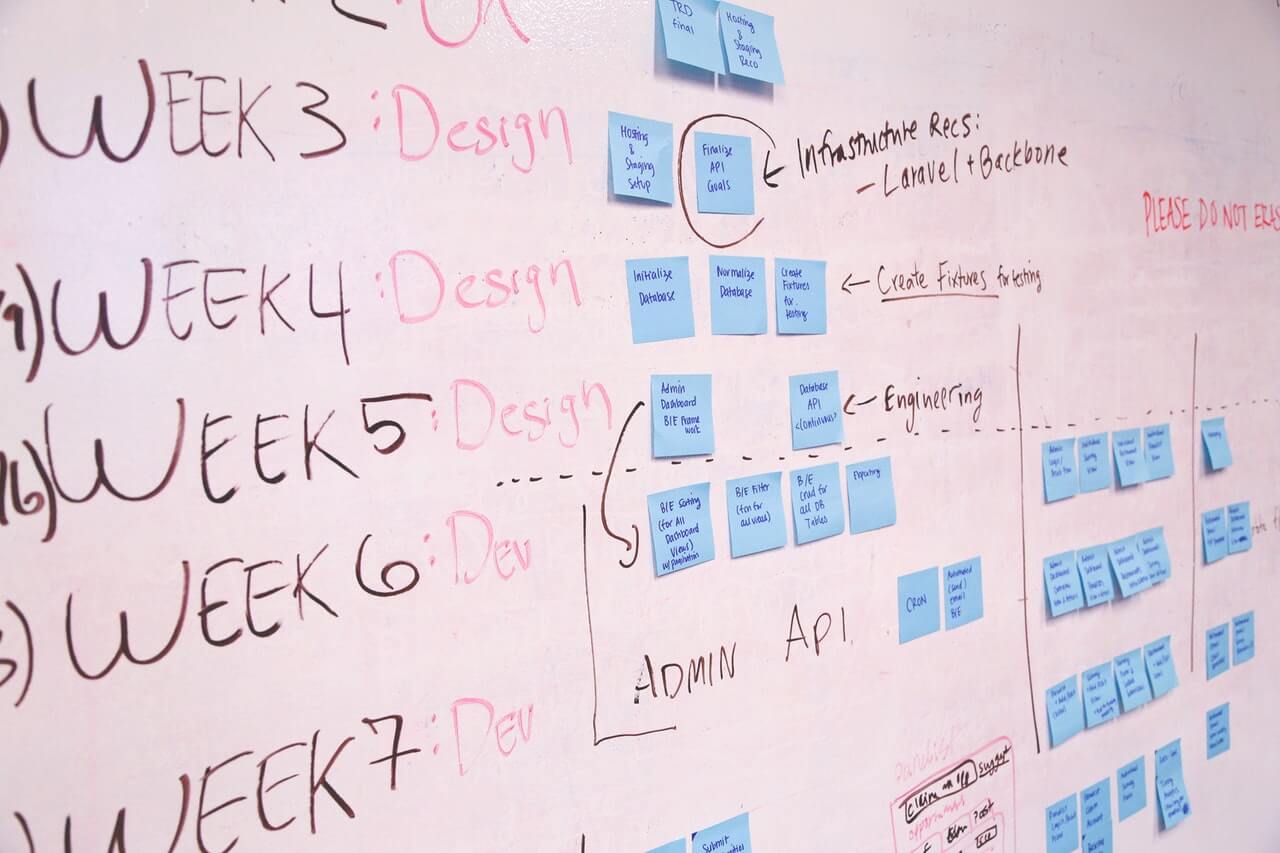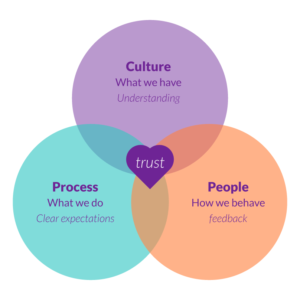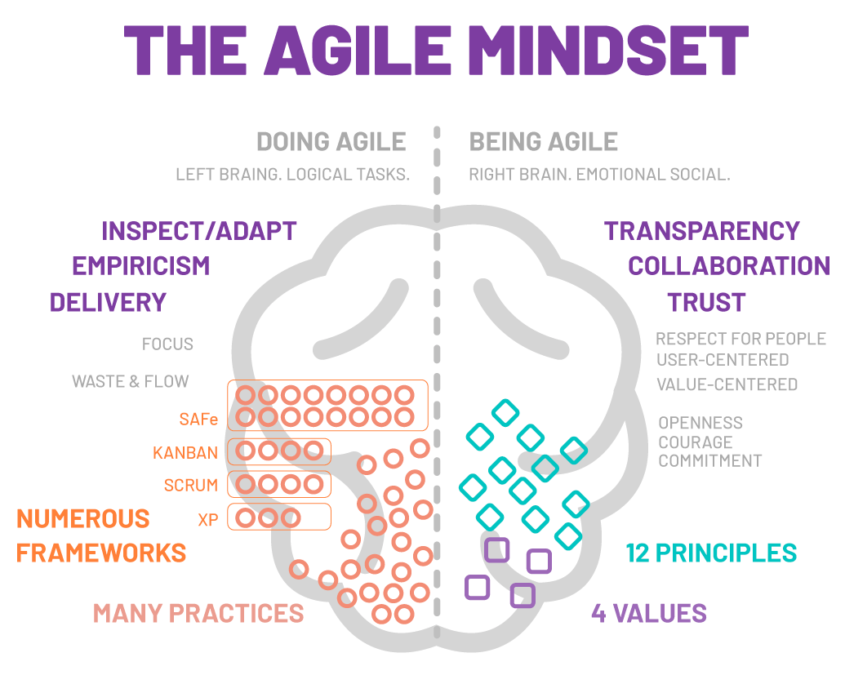Achieving high performance and delivering extraordinary things is about exceeding all the expectations. But in order to do that, you need a high-performance software development
Of course, managing the entire structure of software development is not easy at all. But, if you’re leading a software development team, it’s a matter of understanding what expectations are on the table in order to handle resources and teams more effectively.
According to a Standish Report, only 37% of IT projects have been completely successful. More than 40% of them ended after the deadline, costing more than the estimated or with fewer resources that were agreed. And it gets worse: 21% of the IT projects were total failures, being canceled before the delivered time, or were delivered but never used.
Fortunately, there are a ton of success cases when we’re talking about guaranteeing great results for managing development teams. But what techniques are these? Where to get started?
A good starting point is to observe how high performance teams usually work, what they have in common, and what methodology or tools they use.
We need to start to think about how are these teams distributed, what roles do they hold, what kind of model of work do they use… Besides that, how do they empower and engage people? How does the company nurture its culture?
At the end of the day, these answers are crucial to getting valuable insights, and finally, you’ll be able to define your own framework to drive a high performance team in your company.
If you’re curious about how to structure a distributed software development team for achieving high performance, keep reading this article!
1) People, processes, and culture: defining a compelling direction
Nobody wants to get on a punctured boat. That’s why high performance teams start with defining a compelling direction based on people, processes, and culture. “In the old days, the traditional model has been built in hiring employees for working a number of hours, making the code and that’s it”, said Alberto Silveira, Head of Engineering at PowerSchool Group in New York City.
According to Alberto, developing a strong culture based on trust and confidence is extremely important because it creates the trigger which connects technical skills and the company’s goal. Without it, he says, motivation goes down. “The opposite of high performance is chaos”, punctuated him.
When leaders build a culture of trust, teams and individuals are measured by their outcomes and not by traditional Agile metrics, for instance. They are measured by the value they add to customers. “When a team member believes and has a passion for what is being done, s/he will stay longer in the company. People will wake up, innovate, get things done, and keep things running when they are motivated”, concluded.
People
A high-performance team is a group of people strategically distributed in key skills that collaborate to achieve a common goal.
But, there are no results without people’s engagement. Briefly, high performance teams are formed by people who rely on each other and are driven by transparency, respect, and trust.
Once each individual behavior affects the entire team, the leaders have an important role to establish open communication and provide a set of initiatives to build symbiotic and truly two-way relationships.
Also, leaders should hire and develop people with good communication skills, high emotional intelligence, and the ability to work independently. As part of the team, leaders are able to identify the self-starts and motivators. Find out how to involve them in creative and innovative roles in order to achieve the best results for s/he and the company.
Processes
It seems hard, but it’s true: nowadays companies build a strong structure or die. According to Page Personnel, one of the largest global recruitment and management companies, management without planning or poorly structured is one of the most common complaints of employees who resign.
In practice, a strong structure means having a team composed of well-designed processes that describe the patterns through which members interact and their roles. Involve, consult and inform is critical to align expectations and to avoid the excuse of “I didn’t know it”.
But the process can’t be an obstacle. Therefore, companies need to give space for fast-learners if they want to develop innovative products. In the Agile Mindset, companies operate as interacting and integrated networking of teams. In the agile mindset, the process is part of the game, but you need to focus on a continuous way of improvement and respond to a brief flexibly.
Continuous Delivery, Continuous Deployment, and Continuous Integration
As part of an Agile Mindset, high performance teams commonly work by continuous delivery, continuous deployment, and continuous integration processes.
These methods are part of DevOps culture and basically, means automate processes and running tests collaboratively.
For instance, validation can be automated as often as possible by merging changes back to the main branch (Continuous Integration), code changes can be deployed to testing and/or production environment after the build stage (Continuous Delivery) and finally, every change that passes all stages of your production pipeline is released to your customers (Continuous Deployment).
Some of the benefits from this method are getting the issues solved early, reducing test costs, and of course, accelerating the release of your products.
Culture
High performance teams are driven by focusing on aligning people’s aspirations and the company’s expectations. Supporting people in their career, guaranteeing flexibility to change their position inside the company is crucial to keep a healthy development team. Culture is the key to consolidate engagement.
A study by ADPRI, the Research Institute for Data-Powered Business (ADPRI) showed that only 16% of employees are fully engaged at work, while 84% simply follow the stream in the United States.
The number goes against the country’s low per capita productivity, which has fluctuated around 1% per year – an even worse performance in countries like the United Kingdom and Germany.
If you’re leading a software development team one of your big challenges will be building and fostering consistent culture. Consistent culture is composed of creating satisfaction and a sense of meaning for the team.
At the same time, high-performance software development eams usually encourage a mindset shift to be solution-focused and customer-centric. Manage the expectations establishing data-driven decision-makers is, surely, the right way to follow.
2) Build a shared model among Management, Product, and Engineering
Making the best decision at all stages of the software development process demands a shared management mindset among product, engineering, and management teams. These three perspectives are mandatory to achieve high performance results.
Shared Management is a method of administration in which all members of the organization are considered peers, without leadership positions. All employees are invited to think strategically, make important decisions, and take individual responsibility for them.
This represents an opportunity to put everybody on the same page and follow the “north star”, a concept created by Alberto Silveira. “The teams can’t compete with each other, but they must have a common destination”, explains.
To him, each member of these teams should understand that they are in the same boat which needs to get from point A to point B. To achieve their goal the team needs to have the coordinates of the destination. From there everything becomes simpler and clearer.
“Each department needs to be empowered and make decisions to better reach the destination, otherwise each one sees its own context and does not see the general context from which we have to arrive. they are moving but they are not advancing”, concluded.
Management
Handle non-development work, review metrics, following the entire development process… Managing software development teams is the art of leading the cycle of planning, scheduling, developing, testing, and deploying products.
Great leadership in managing high-performance software development teams usually encourage the team to develop their soft skills, at the same time that supports their expertise in solving problems, empowering their strengths, and addressing their weaknesses.
Some of the main roles of the Management Department include:
- CTO
- Technical Lead
- VP / Head of Product
Product
Plan and execute a product that exceeds customer expectations is the main goal of Product professionals. High-performance software development teams are able to bring a product from concept or idea through market release and beyond.
From identifying a market need and quantifying the opportunity to build the product roadmap and releasing the MVP to users, the Product Department has a fundamental role being the main representative of the customer and also being accounted for delivery of a final product with a unique value proposition.
Some of the main roles of the Product Department include:
- Product Owner
- Project Sponsor
- Project Manager
Engineering
Engineers are naturally passionate about inventing, building, and testing new solutions applied as technology products. In order to fulfill company or customer requirements, engineers must be able to provide workable solutions and gather strong analytical skills, visualize processes, and outcomes.
Some of the main roles of the Engineering Department include:
- VP / Head of Engineering
- Frontend Engineer
- Backend Engineer
- Fullstack Engineer
- DevOps Engineer
- Quality Engineer
- Security Engineer
Find more about Key Development Team Roles within the Software Development Lifecycle (SDLC)
How to find talent (spoiler: ask for help from staff augmentation)
If you are facing the hard challenge of building a high-performance software development team and it’s far from getting it done, I have good news for you: you’re not alone.
An MIT survey indicated that only 10% of companies are able to attract the professionals they need to make this technological transition. One of the barriers, which mainly affects small companies, is the greatest difficulty in finding talents who offer technical and managerial skills simultaneously.
After all, the expectation of companies is to use digital and information technologies as a market strategy. Demanding that the professional be a good manager of both resources and people as well as techniques and processes.
The first tip to find great talents when building a high-performance software development team is stopping wasting time trying to do it by yourself and ask for help from staff augmentation.
You need someone fully dedicated to the task of understanding company needs and business goals to deliver on digital product teams that fit your company culture.
How Ubiminds builds and scales the team for you
Ubiminds is the most lasting solution in the IT market to build and scale high-performance software development teams. To guarantee efficiency Ubiminds is based on a custom-curated recruitment process that connects your company with qualified talents from different backgrounds such as Product Manager, UX/UI Designer, Mobile engineer, Web Engineer, Backend Engineer, and QA Specialist.
Based on a culture of People First and Averaging on Awesome, Ubiminds helps companies Meet Technical Staffing Needs, at the same time that purpose a new way to expand HR structure, relieving from bureaucracy. Ubiminds’ goal is to place highly skilled people in top-notch jobs matching talent to innovative, performance-based companies.
“Ubiminds already have a mindset ahead. Long before the pandemic, they didn’t hire like traditional companies. They connect companies with high level IT professionals. They know both sides deeply and match the company’s mission with great talents. This really makes the difference”, Alberto Silveira Junior.
If you are an employer and would like to talk to us about your current recruitment needs, reach out through the form below.

International Marketing Leader, specialized in tech. Proud to have built marketing and business generation structures for some of the fastest-growing SaaS companies on both sides of the Atlantic (UK, DACH, Iberia, LatAm, and NorthAm). Big fan of motherhood, world music, marketing, and backpacking. A little bit nerdy too!







